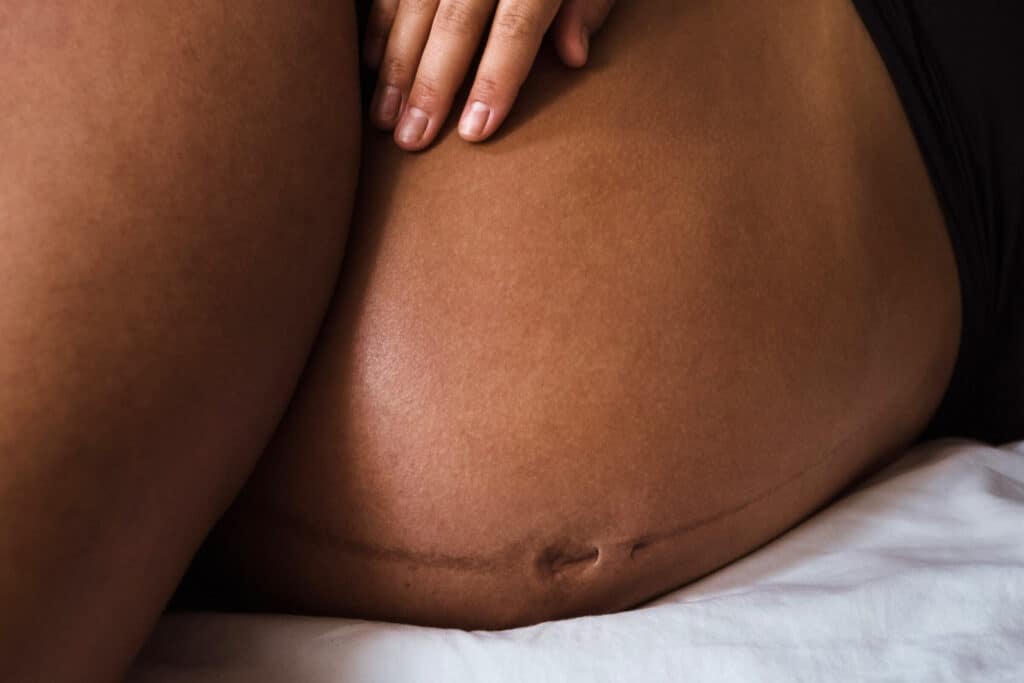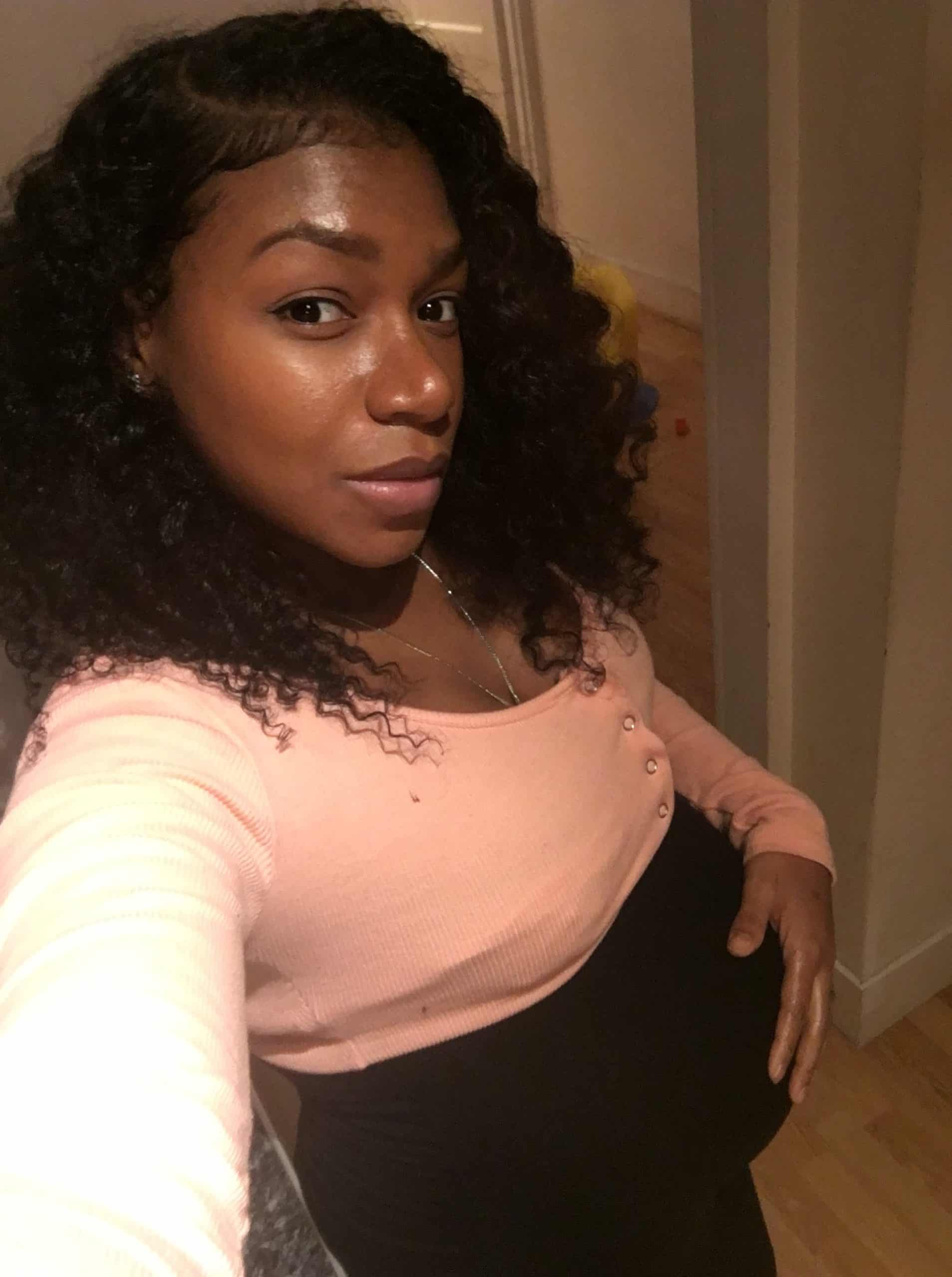C-section incision burning and stinging is a common experience for many women who undergo cesarean delivery. This discomfort can range from mild to severe and can occur immediately after surgery or during the healing process. While some burning and stinging sensations are normal and expected, others may be a sign of infection or other complications.
Understanding C-section incision and the healing process is crucial to recognizing and managing burning and stinging sensations. Women who have had a C-section should be aware of the potential causes of discomfort and the signs of infection. By taking proper care of the incision site and following recovery tips, women can reduce their risk of experiencing burning and stinging and promote a healthy healing process.
Key Takeaways
- C-section incision burning and stinging is a common experience for many women, but it can range from mild to severe and may be a sign of infection or other complications.
- Understanding the healing process and potential causes of discomfort can help women recognize and manage burning and stinging sensations.
- Proper self-care and recovery tips can reduce the risk of discomfort and promote a healthy healing process.
Understanding C-Section Incision
A C-section, also known as a cesarean delivery, is a surgical procedure used to deliver a baby. During a C-section, a horizontal or vertical incision is made in the mother’s abdomen and uterus to remove the baby. The incision is then closed with stitches or staples.
After a C-section, it is common for the incision to feel sore and uncomfortable. Some women may also experience burning and stinging around the incision area. This is a normal part of the healing process, but it can be uncomfortable.
There are a few different types of incisions that can be made during a C-section. The most common type is a horizontal incision, which is made just above the pubic hairline. This type of incision usually heals well and leaves a small, horizontal scar.
In some cases, a vertical incision may be necessary. This type of incision is made from the belly button to the pubic hairline. Vertical incisions are less common and are usually only used in emergency situations.
Laparoscopic surgery is another type of C-section that uses small incisions and a camera to guide the surgeon. This type of surgery is less invasive and may result in less scarring and a shorter recovery time.
Overall, it is important to follow your doctor’s instructions for caring for your incision after a C-section. This may include keeping the area clean and dry, avoiding strenuous activity, and taking pain medication as prescribed. If you experience any unusual symptoms, such as fever or excessive bleeding, be sure to contact your doctor right away.
The Healing Process
After a C-section, the healing process can take several weeks. During this time, the incision site will be tender, and there may be some burning and stinging sensations. It is essential to take care of the incision site to ensure proper healing and minimize the risk of infection.

The first few days after surgery are critical for the healing process. The incision site will be covered with a dressing that should be changed regularly. It is important to keep the area clean and dry to prevent infection. Avoid using any creams or lotions on the incision site unless instructed by a healthcare provider.
As the incision site heals, scar tissue will form. Scar tissue is made up of collagen, a protein that helps to strengthen and repair damaged tissue. The scar tissue may appear raised, red, or pink and may feel itchy or sensitive. This is a normal part of the healing process and should improve over time.
To help minimize scarring, it is essential to keep the incision site clean and dry. Avoid exposing the area to sunlight, as this can cause the scar to darken. Massaging the scar tissue once it has healed can also help to break up any adhesions and improve flexibility.
In summary, the healing process after a C-section can take several weeks. Scar tissue will form as part of the healing process, and it is important to take care of the incision site to minimize scarring and reduce the risk of infection.
Experiencing Burning and Stinging
After undergoing a cesarean section (C-section) surgery, it is common to experience some level of discomfort and pain. Burning and stinging sensations around the incision site are among the most common symptoms that women may experience.
The burning sensation is usually described as a feeling of warmth or heat around the incision area. It may be accompanied by redness and tenderness. On the other hand, the stinging sensation is often described as a sharp, prickly feeling around the incision site.
These symptoms are typically caused by the healing process of the incision site. As the incision site heals, the nerves around the area may become irritated, leading to burning and stinging sensations. In some cases, the symptoms may also be caused by an infection or allergic reaction to the surgical materials used during the procedure.
To manage the burning and stinging sensations, doctors may prescribe pain medications, such as acetaminophen or ibuprofen. Applying a cold compress to the incision site may also help to alleviate the symptoms. It is important to avoid scratching or rubbing the incision area, as this can further irritate the nerves and prolong the healing process.
In most cases, the burning and stinging sensations around the incision site will gradually subside as the incision site heals. However, if the symptoms persist or worsen over time, it is important to seek medical attention to rule out any underlying complications.
Potential Causes of Burning and Stinging
C-section incision burning and stinging can be caused by a variety of factors. Here are some potential causes:

Nerve Damage
Nerve damage is a common cause of burning and stinging around the incision site. During a C-section, nerves can be damaged or cut, leading to altered sensation or even numbness in the area. The iliohypogastric and genitofemoral nerves are commonly affected.
Endometriosis
Endometriosis is a condition where the tissue that normally lines the uterus grows outside of it. In rare cases, endometriosis can grow on the incision site from a previous C-section, causing pain, burning, and stinging.
Infection
Infections can cause burning and stinging around the incision site. Signs of infection include redness, swelling, tenderness, and discharge. It’s important to seek medical attention if you suspect an infection.
Hernia
A hernia is a condition where an organ or tissue bulges through a weak spot in the muscle. After a C-section, the abdominal muscles may be weakened, which can increase the risk of developing a hernia. A hernia can cause pain, burning, and stinging around the incision site.
Iliohypogastric Nerve
The iliohypogastric nerve runs from the lower abdomen to the upper thigh. During a C-section, this nerve can be damaged or cut, leading to burning and stinging in the lower abdomen and groin.
Genitofemoral Nerve
The genitofemoral nerve runs from the lower back to the inner thigh. During a C-section, this nerve can be damaged or cut, leading to burning and stinging in the groin and inner thigh.
Overall, there are several potential causes of burning and stinging around the C-section incision site. It’s important to speak with a healthcare provider if you’re experiencing these symptoms to determine the underlying cause and receive appropriate treatment.
Recognizing Signs of Infection
After a cesarean delivery, it is important to monitor the incision site for any signs of infection. Infections can occur when bacteria enter the incision site, and can lead to serious complications if left untreated. Recognizing the signs of infection early on can help ensure prompt treatment and prevent further complications.
One of the most common signs of infection after a c-section is a fever. A fever is generally defined as a body temperature above 100.4°F (38°C). If a new mother experiences a fever, it is important to contact her healthcare provider right away.
Another sign of infection is discharge from the incision site. Normal incision drainage is clear or slightly yellowish in color, but if the drainage becomes cloudy, green, or foul-smelling, it may be a sign of infection.
Pus is another indication of infection. Pus is a thick, yellowish fluid that may ooze from the incision site. If a new mother observes pus coming from the incision site, she should contact her healthcare provider immediately.
A foul odor emanating from the incision site is also a sign of infection. If the incision site smells bad, it may indicate that there is an infection present.
In addition to the above signs, there are other signs of infection to watch out for, such as redness, swelling, and warmth around the incision site. These are all indications that there may be an infection present.
If a new mother experiences any of these signs of infection, it is important to contact her healthcare provider right away. With prompt treatment, most infections can be successfully treated and complications can be avoided.
Treatment and Pain Management
The treatment of burning and stinging sensations after a C-section incision is crucial for the patient’s comfort and recovery. Pain management is an essential part of the treatment plan, and various options are available to alleviate the discomfort.

Painkillers are the most common medications used to manage pain after a C-section. Over-the-counter pain relievers such as acetaminophen and ibuprofen can be effective in reducing pain and inflammation. However, it is essential to consult with a healthcare provider before taking any medication.
In some cases, stronger prescription medications may be necessary to manage pain. The healthcare provider may prescribe opioids or other pain medications to alleviate pain. It is crucial to follow the dosage instructions carefully and not exceed the recommended dose.
Antibiotics may also be prescribed to prevent infection and promote healing. It is essential to take the full course of antibiotics as prescribed by the healthcare provider.
An anesthetic shot or injection may be used to numb the incision site and reduce pain during the procedure. The healthcare provider may also use local anesthesia during the C-section to reduce pain and discomfort.
Other treatments that may help manage pain and promote healing include applying heat or cold packs to the incision site, wearing a supportive abdominal binder, and getting plenty of rest.
It is essential to follow the healthcare provider’s instructions carefully and attend all follow-up appointments to ensure proper healing and recovery. If the burning and stinging sensations persist or worsen, it is crucial to contact the healthcare provider immediately.
Self-Care and Recovery Tips
After undergoing a C-section, the incision site may burn or sting due to the healing process. However, there are several self-care and recovery tips that can help alleviate these symptoms and promote healing.
Firstly, it is important to prioritize rest and relaxation during the recovery period. This means avoiding strenuous activities and getting plenty of sleep. Gentle exercises, such as walking or light stretching, can also help improve circulation and promote healing.
It is also important to wear loose and comfortable clothing to avoid irritation or rubbing against the incision site. Additionally, using ice or heat therapy can help alleviate swelling and discomfort. Applying a cold pack for 20 minutes at a time, several times a day, can help reduce swelling. Heat therapy, such as a warm compress or heating pad, can also help alleviate pain and discomfort.
Proper hygiene is also crucial during the recovery period. It is important to keep the incision site clean and dry to prevent infection. Avoiding activities that may cause excessive sweating or moisture, such as swimming or taking baths, can help prevent infection.
In addition to these tips, it is important to follow any specific instructions or guidelines provided by the healthcare provider. This may include taking medication as prescribed, attending follow-up appointments, and monitoring for any signs of infection or complications.
Overall, self-care and recovery tips can help alleviate burning and stinging at the C-section incision site and promote healing. By prioritizing rest, wearing loose clothing, using ice or heat therapy, practicing proper hygiene, and following healthcare provider instructions, individuals can have a smoother and more comfortable recovery experience.
When to Seek Medical Attention
If a woman experiences burning or stinging sensations around her C-section incision, it is important to monitor the symptoms closely. In most cases, these sensations are normal and will subside on their own within a few days or weeks. However, if the symptoms persist or worsen, it may be necessary to seek medical attention.
If a woman experiences any of the following symptoms, she should contact her healthcare provider or seek medical attention immediately:
- Fever of 100.4 degrees Fahrenheit or higher
- Severe pain or tenderness around the incision site
- Redness, swelling, or discharge from the incision site
- Foul-smelling discharge from the vagina
- Heavy bleeding
- Difficulty breathing or shortness of breath
These symptoms may be signs of an infection or other complication, and prompt medical attention is necessary to prevent further complications.
If a woman is unsure whether her symptoms warrant medical attention, she should contact her healthcare provider for guidance. It is always better to err on the side of caution and seek medical attention if there is any doubt.
During pregnancy, it is important to attend all scheduled prenatal appointments and inform the healthcare provider of any unusual symptoms or concerns. This can help identify potential issues early on and prevent complications during delivery and recovery.
If a woman needs to seek medical attention for C-section incision burning or stinging, she may need to visit a hospital or healthcare provider’s office. The doctor may prescribe medication or recommend additional treatment to help manage the symptoms and prevent complications.
In summary, if a woman experiences burning or stinging sensations around her C-section incision, she should monitor the symptoms closely and seek medical attention if they persist or worsen. It is important to attend all scheduled prenatal appointments and inform the healthcare provider of any unusual symptoms or concerns.
Preventing Future C-Section Incision Discomfort
After undergoing a C-section, women may experience discomfort, burning, and stinging in the incision area. This discomfort can be prevented by following certain measures.

Scar Massage
Scar massage is a technique that can help prevent future discomfort and promote healing. It involves gently massaging the incision area to break up scar tissue and increase blood flow. This can be done with the fingertips or with a soft-bristled brush.
Physical Therapy
Physical therapy can also help prevent future discomfort by strengthening the abdominal muscles and improving overall mobility. A physical therapist can provide exercises that are safe and effective for women who have undergone a C-section.
Scar Tissue Mobilization
Scar tissue mobilization is a technique that involves applying pressure to the scar tissue to break it up and promote healing. This can be done with the fingertips or with a special tool. It is important to seek the guidance of a healthcare professional before attempting this technique.
Abdominal Binding
Abdominal binding is a technique that involves wrapping the abdomen with a compression garment to provide support and promote healing. This can help prevent discomfort and improve overall mobility. It is important to seek the guidance of a healthcare professional before attempting this technique.
Treating Endometriosis
Endometriosis is a condition that can cause discomfort and pain in the incision area. It is important to seek the guidance of a healthcare professional for appropriate treatment options.
By following these measures, women can prevent future discomfort and promote healing after a C-section.
Related Post: How to Keep C Section Incision Dry from Sweat: Tips and Tricks
Frequently Asked Questions
How do I relieve burning and stinging sensations from my C-section incision?
To relieve burning and stinging sensations from a C-section incision, one can try applying a cold compress or taking pain medication as prescribed by a doctor. It is important to avoid scratching or rubbing the incision site, as this can cause further irritation.
What are the common causes of burning and stinging sensations in a C-section incision?
Burning and stinging sensations in a C-section incision can be caused by a variety of factors, including nerve damage, infection, or skin irritation. It is important to consult with a healthcare provider if these symptoms persist or worsen.
What are some effective remedies for C-section scar burning?
Some effective remedies for C-section scar burning include applying aloe vera gel or vitamin E oil to the incision site, taking warm baths, and gently massaging the area to promote circulation. It is important to follow any specific instructions provided by a healthcare provider.
How long does it take for C-section incision burning to subside?
The length of time it takes for C-section incision burning to subside can vary depending on the individual and the severity of the symptoms. It is important to follow any post-operative instructions provided by a healthcare provider and to seek medical attention if symptoms persist or worsen.
What are the signs of infection in a C-section incision?
Signs of infection in a C-section incision can include redness, swelling, warmth, pus, or a foul odor. It is important to seek medical attention if any of these symptoms are present, as they may indicate a serious infection.
Is it normal to experience burning and stinging sensations in a C-section scar years after the surgery?
It is not uncommon for individuals to experience burning and stinging sensations in a C-section scar years after the surgery. This can be due to nerve damage or scar tissue formation. It is important to consult with a healthcare provider if these symptoms persist or worsen.

Iesha is a loving mother of 2 beautiful children. She’s an active parent who enjoys indoor and outdoor adventures with her family. Her mission is to share practical and realistic parenting advice to help the parenting community becoming stronger.
